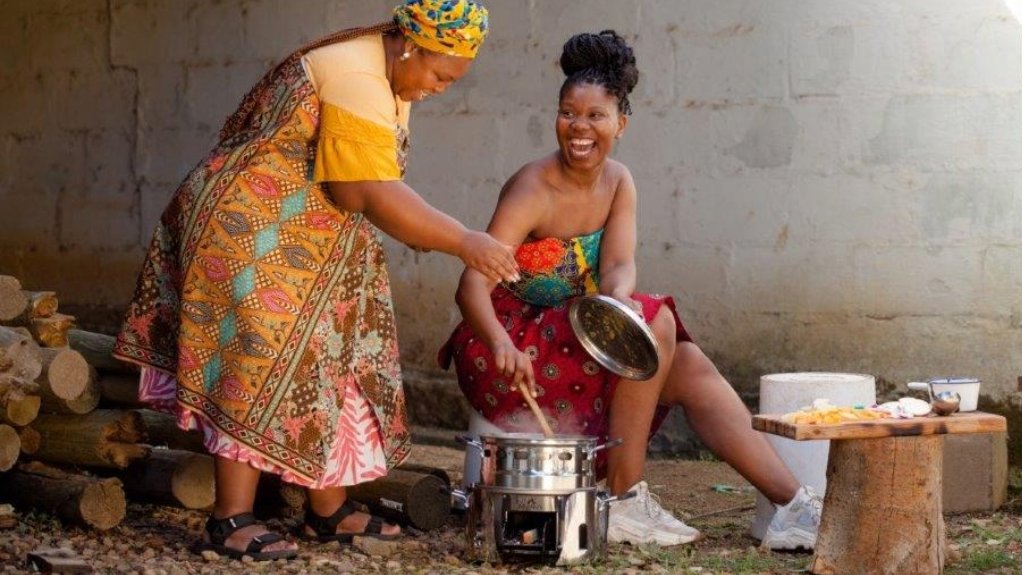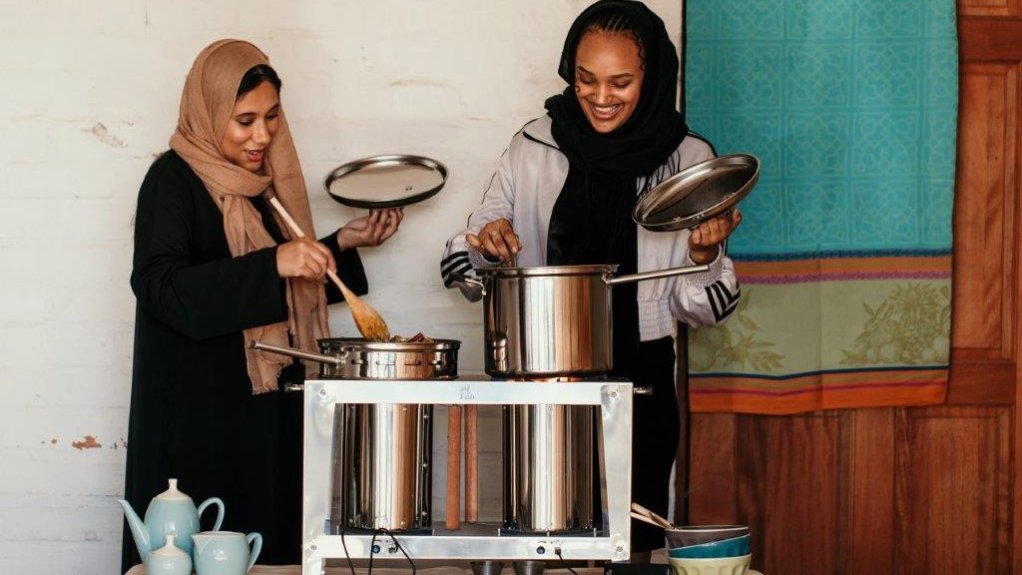Clean and renewable energy solutions company Ener-G-Africa (EGA) on Thursday officially opened its new biomass stove and cookware manufacturing facility, in the Western Cape province town of Paarl. The factory will produce two different types of stoves, and two different ranges of cooking pots.
“Our factory is a stainless steel factory, using only South African manufactured stainless steel, which is world-class,” highlights EGA business development manager Dave Lello. “We have equipped it with the latest technology machines, including a fibre laser cutter, a range of presses, bending machines, and polishing machines, among others.”
The two types of stove are the Multi-Application Fuel Efficient Cookstove (Mafecs) and the Forced Air Biomass (Fab) stove. The latter comes in two formats: single and double (two stove units in one frame). The new plant will be able to produce 120 Mafecs, 80 Fabs and 70 double Fabs each day.
The Mafecs can be provided with different fuel-containing ‘inserts’, namely for wood, charcoal, gas or biomass pellets. The company is initially prioritising wood fuel, because currently the supply of pellets in South Africa is woefully inadequate, and because the Mafecs, being an enclosed system, will greatly increase the safety of cooking in informal dwellings. Ideally, wood from alien trees will be used for fuel. The Fab stoves have fans in their bases, which blow air through the base of the stove, providing them with very high energy efficiency.
The two ranges of pot produced by EGA are the SIZL pot and the eCO2pot. The sizzle pot range is composed of a 2 l capacity pan, 4 l, 6 l and 8 l pots. The eCO2pot range covers the same sizes. Daily production capacity will be 500 SIZL pots and 400 eCO2pots.
“Our SIZL pots have three layers in their bases – a stainless steel layer, and aluminium layer, and another stainless steel layer,” reports Lello. “This protects the base and prevents the food burning, yet the pots are still low cost. They can be used with gas, electricity, and induction stoves, as well as biomass, including open fires. Aluminium pots can’t be used on induction stoves.”
The eCO2pots are basically SIZL pots fitted with an integral skirt. This skirt captures the hot air created by the cooking process and causes it to rise up the side of the pot, so the pot’s side becomes part of its heating surface. This increases energy efficiency and cuts the amount of fuel needed by about 25%.
“We have a ‘tools-and-fuel’ business model,” explains Lello. EGA plans to start its own production of biomass fuel pellets, as well as seeking to stimulate greater output from other, existing producers. This is the ideal fuel, because it can be made locally from agricultural wastes, including bagasse, rice stalks, maize stalks, peanut husks, and so on, and its production creates local jobs. It is also green, being sustainable, and clean, involving very low carbon emissions in its production and distribution.
Edited by: Creamer Media Reporter
EMAIL THIS ARTICLE SAVE THIS ARTICLE
ARTICLE ENQUIRY
To subscribe email subscriptions@creamermedia.co.za or click here
To advertise email advertising@creamermedia.co.za or click here















